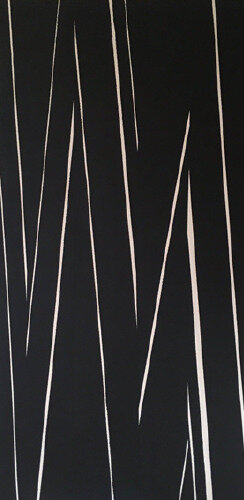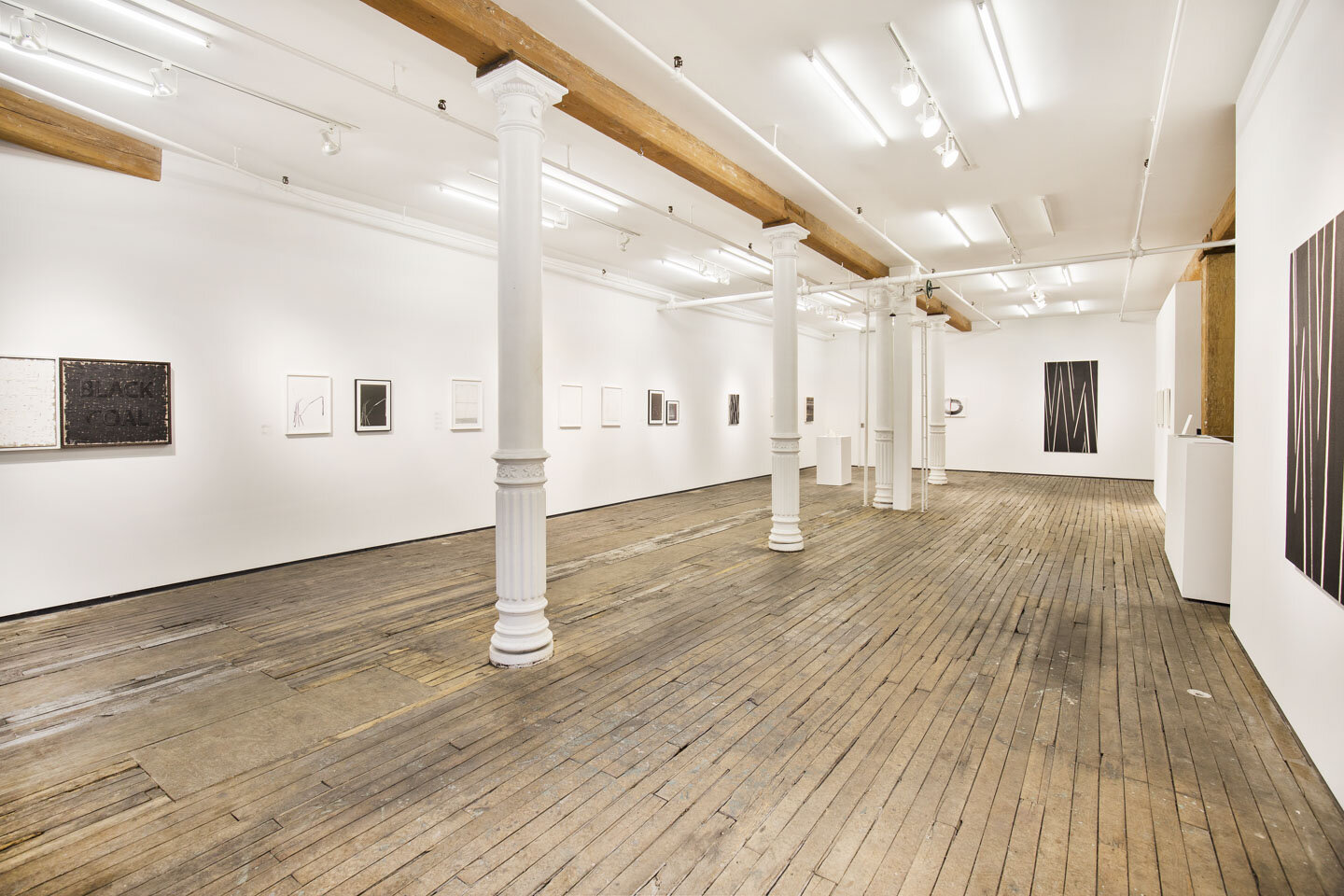
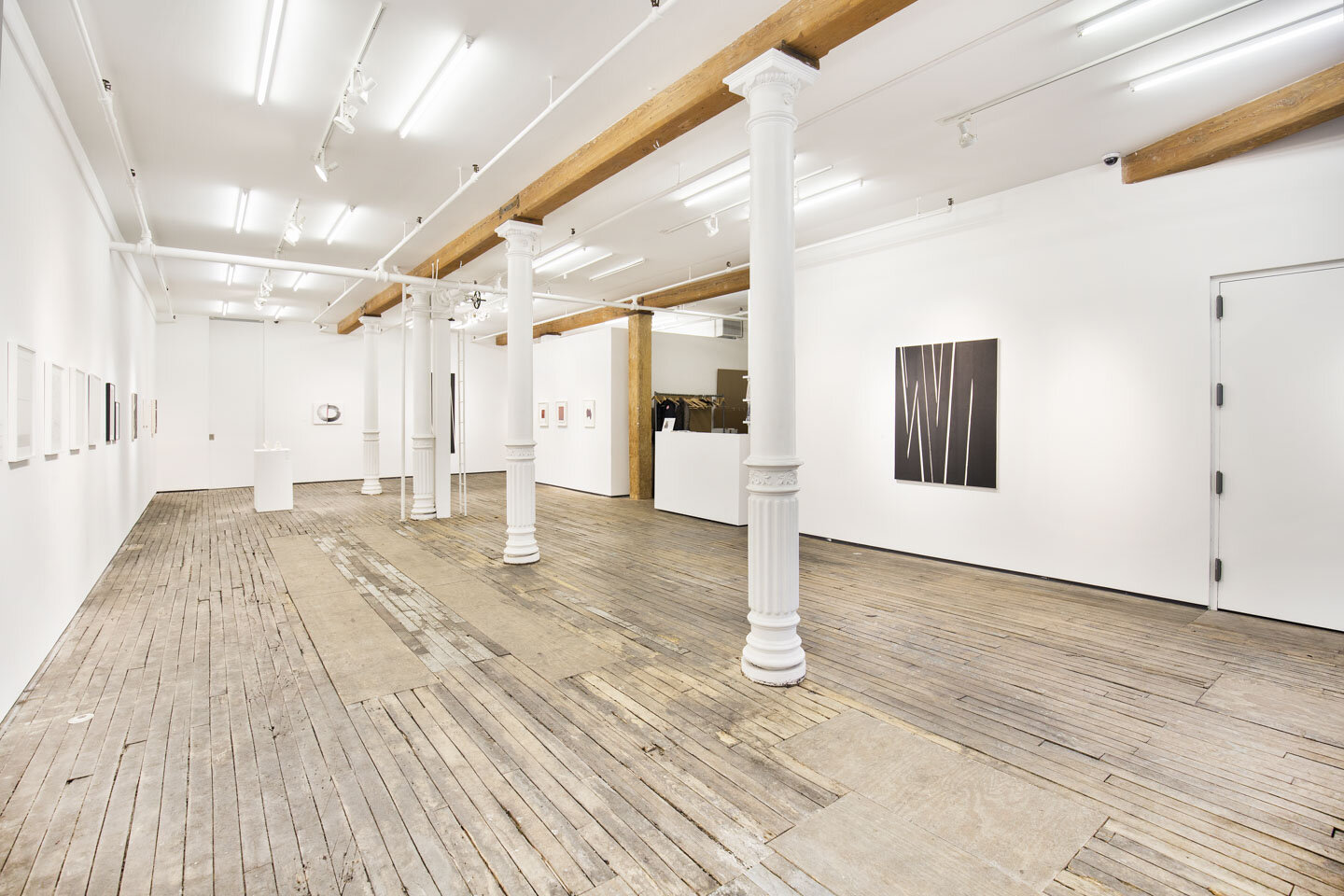
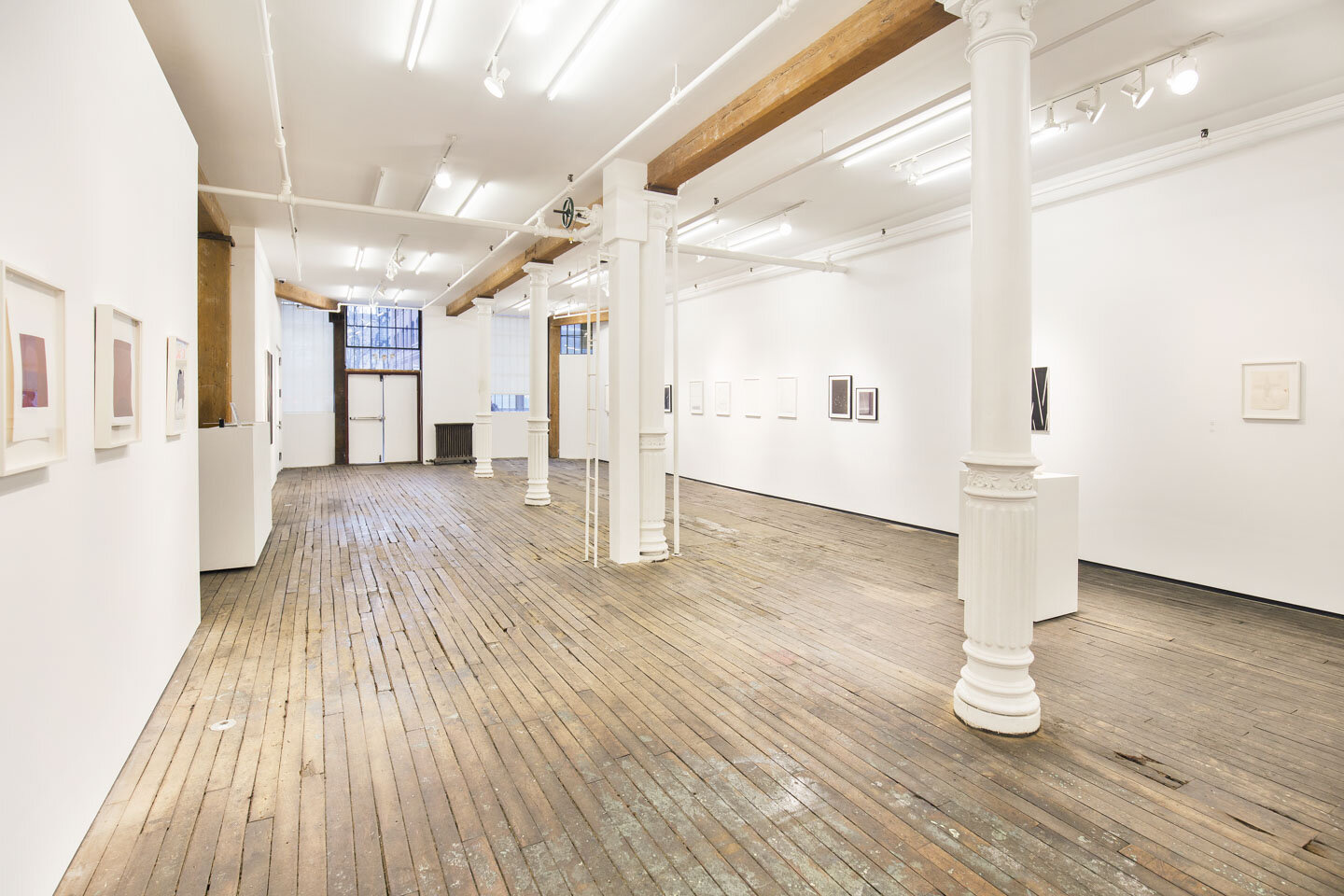
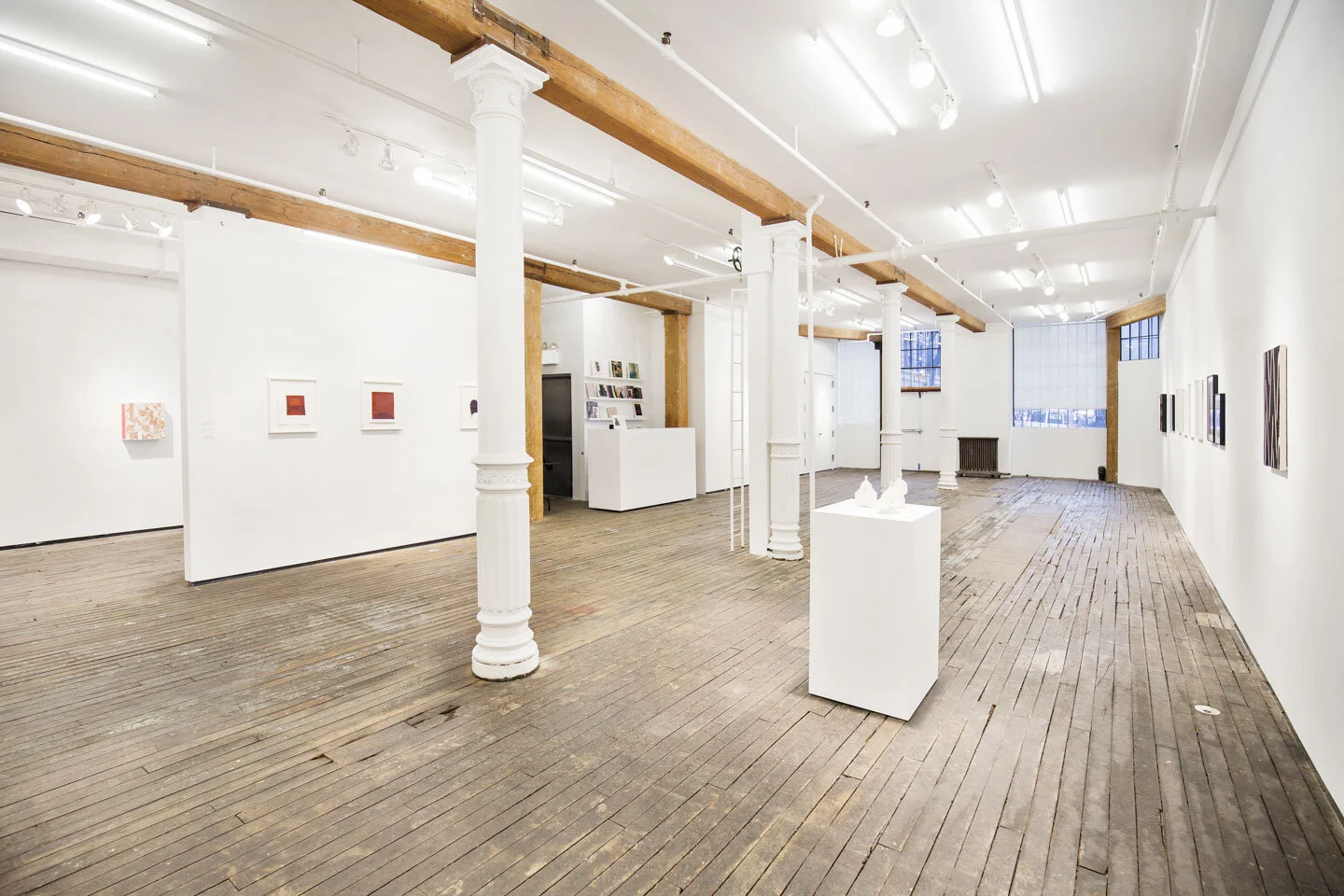
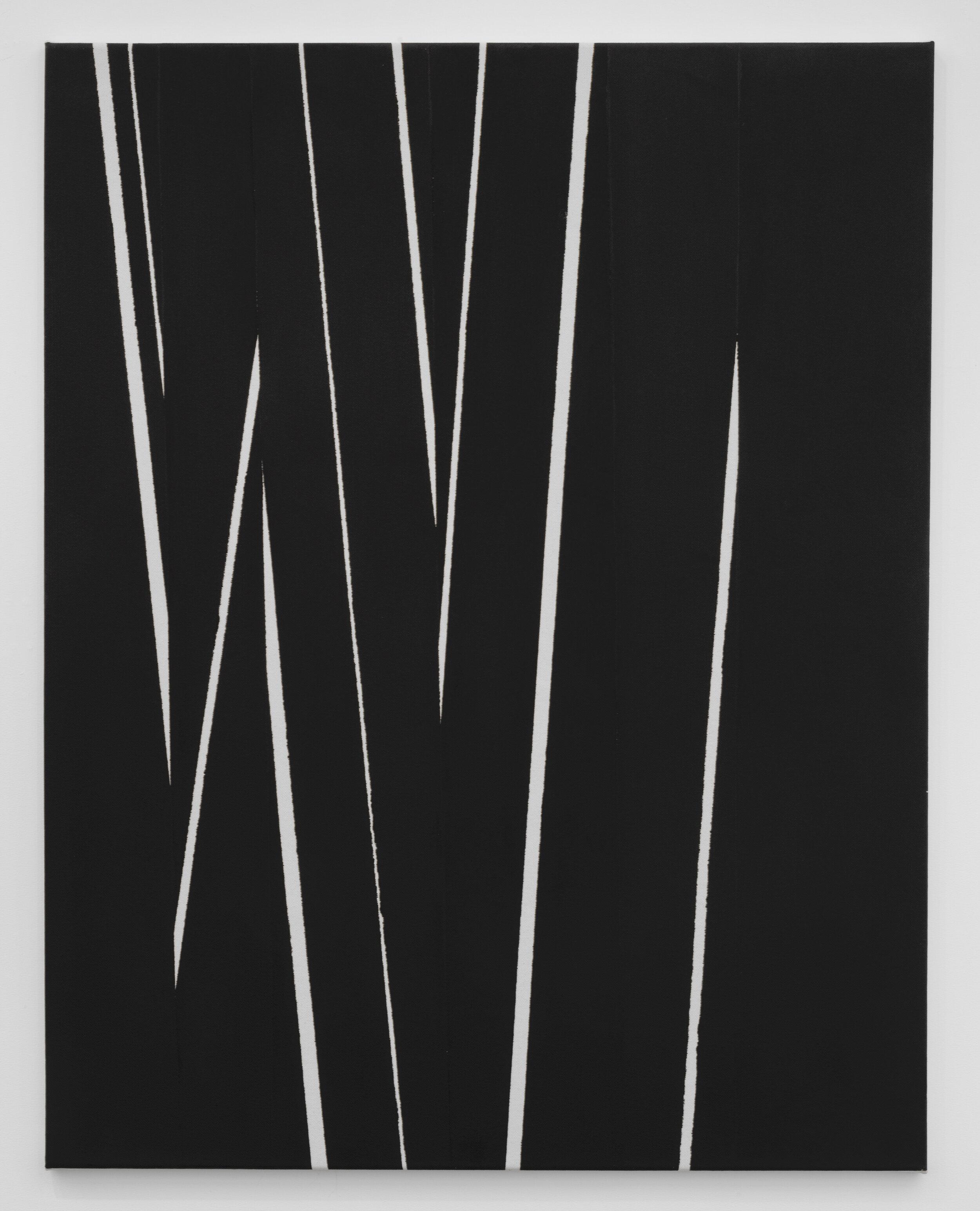
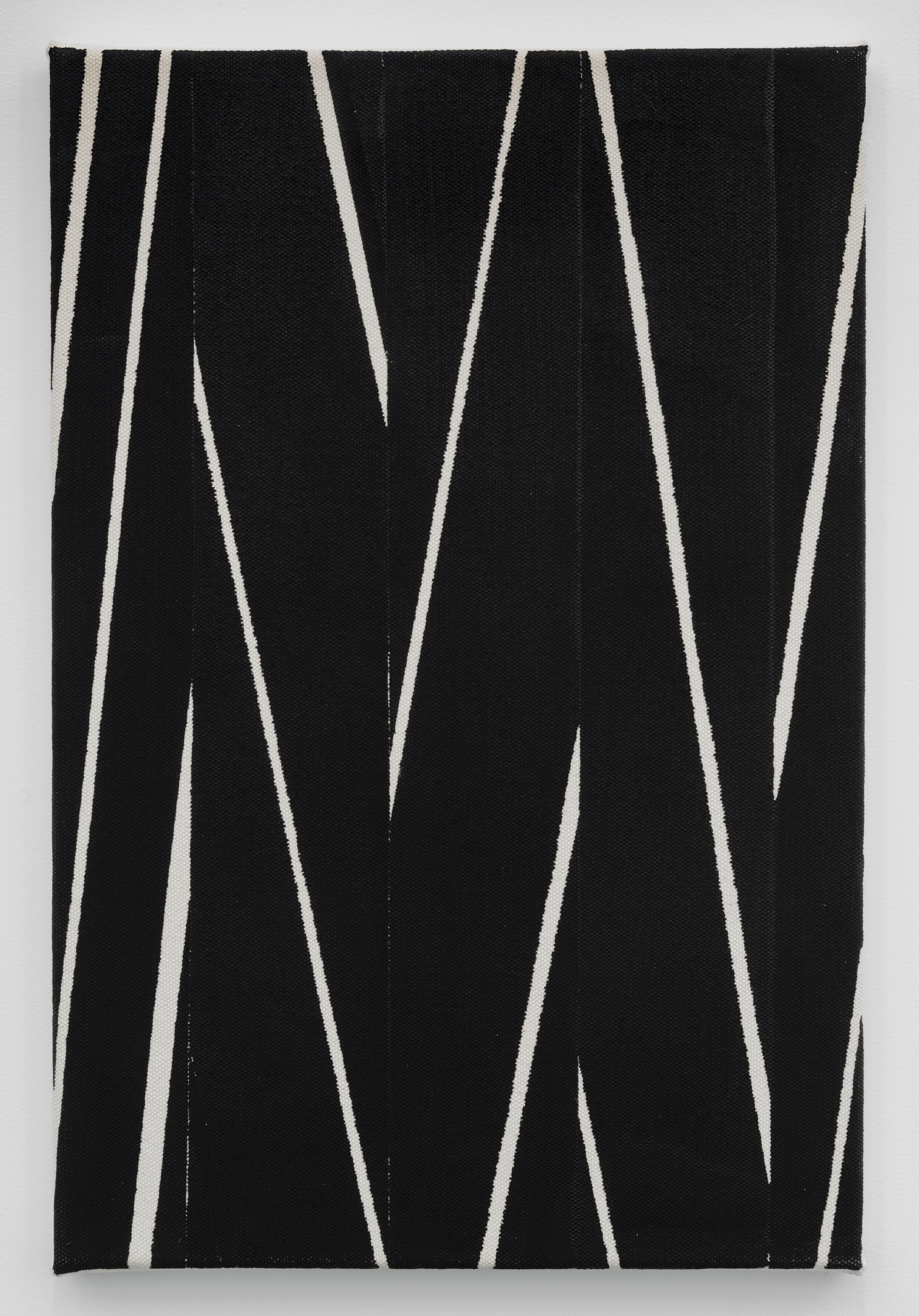

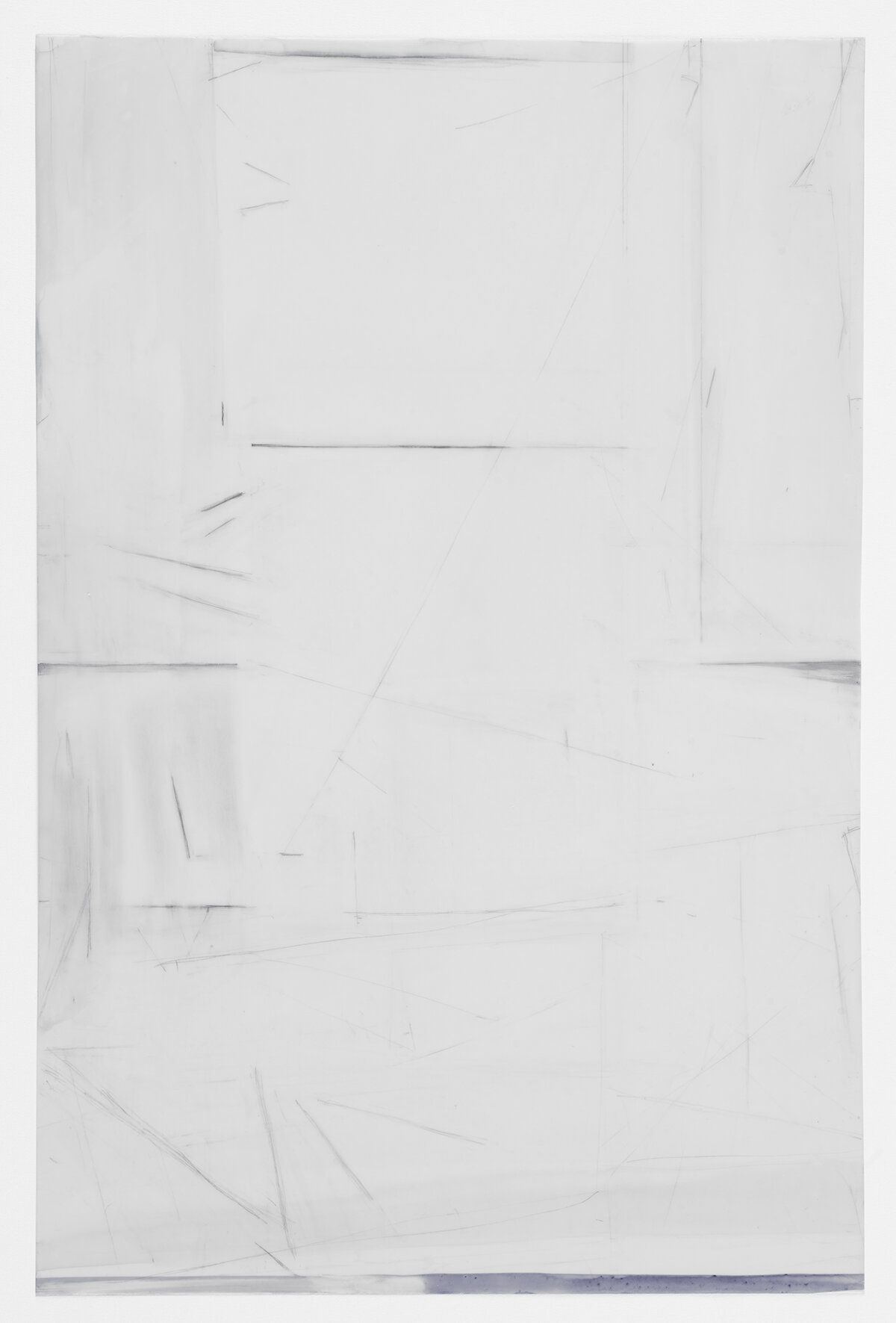

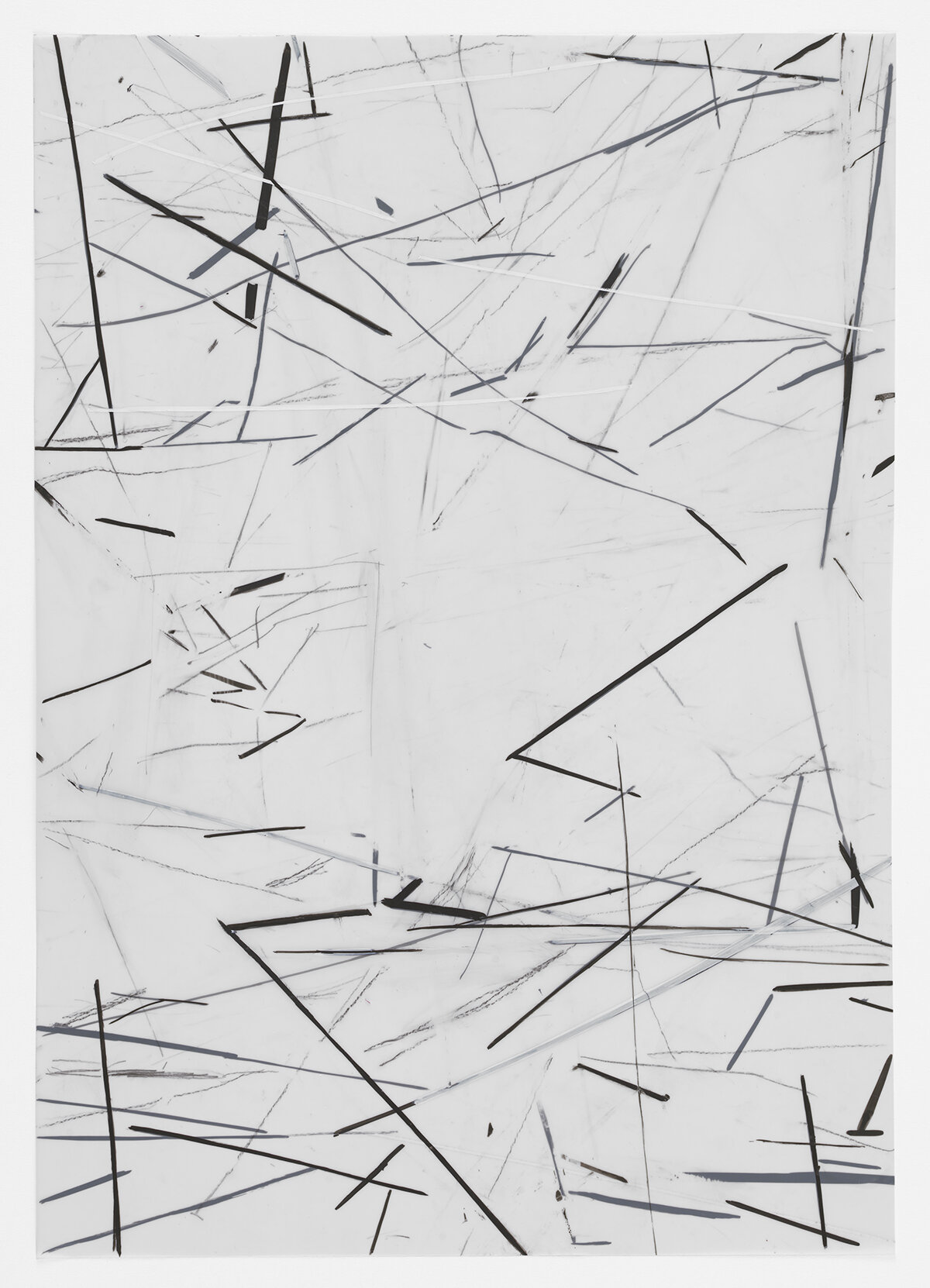
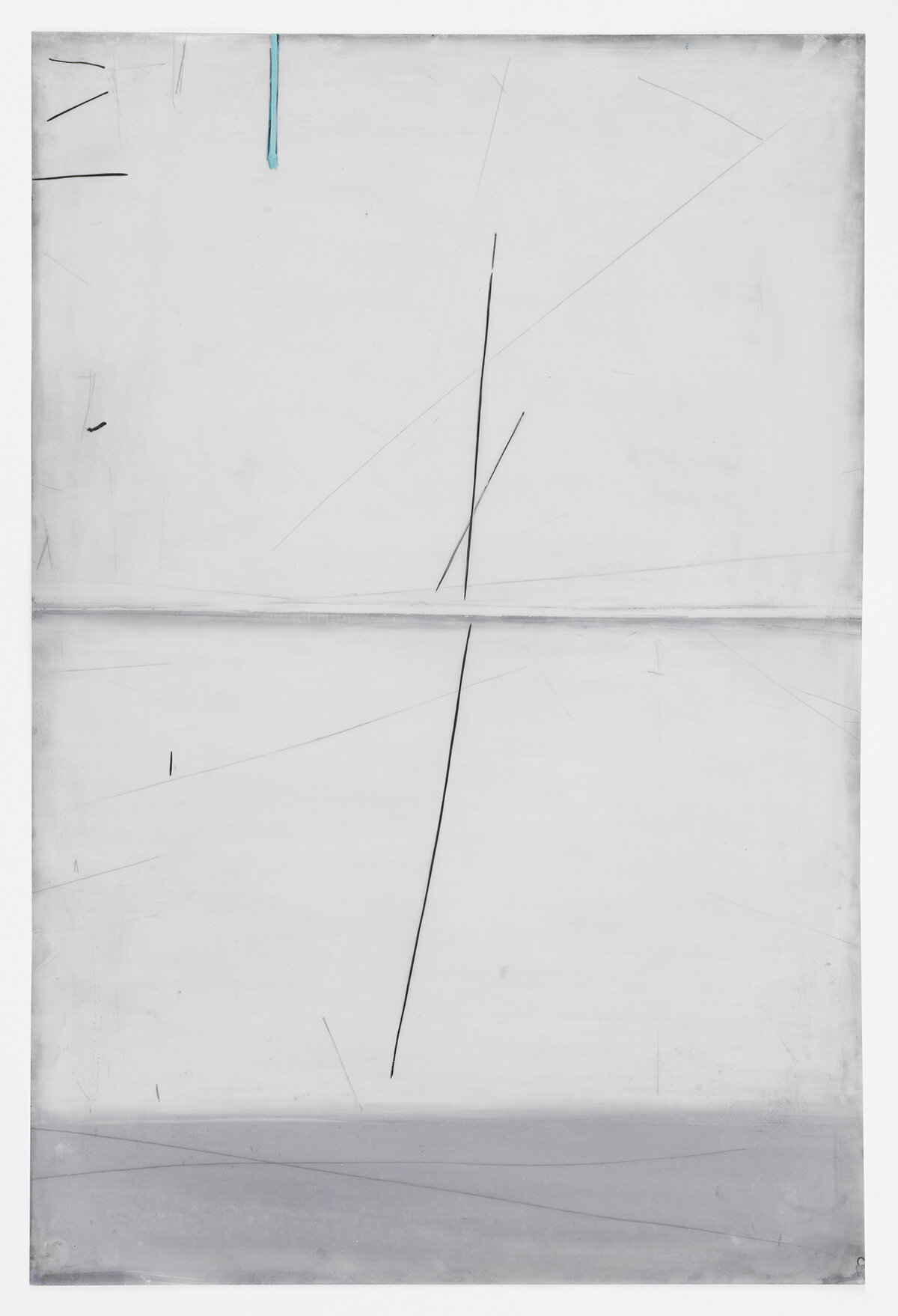
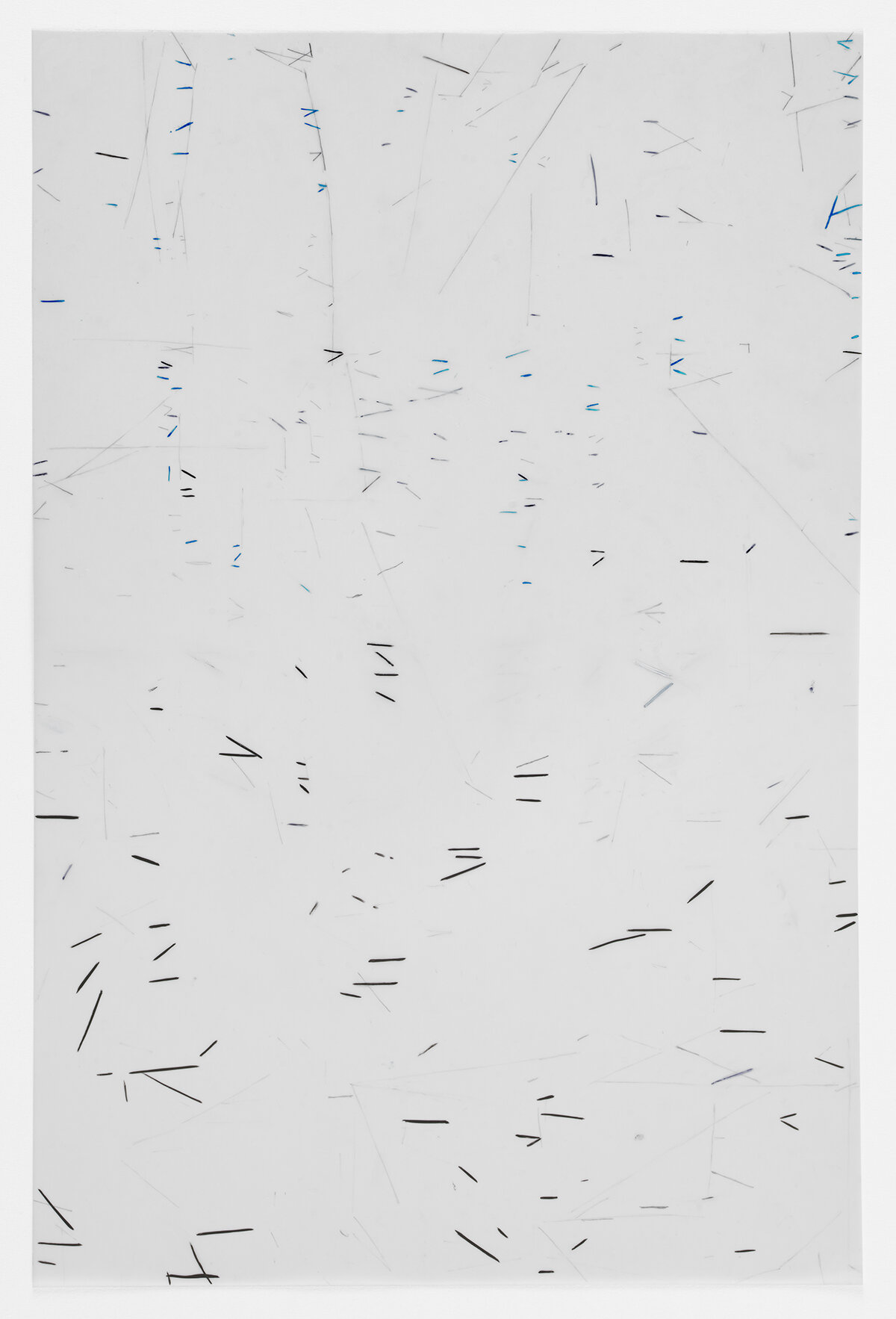
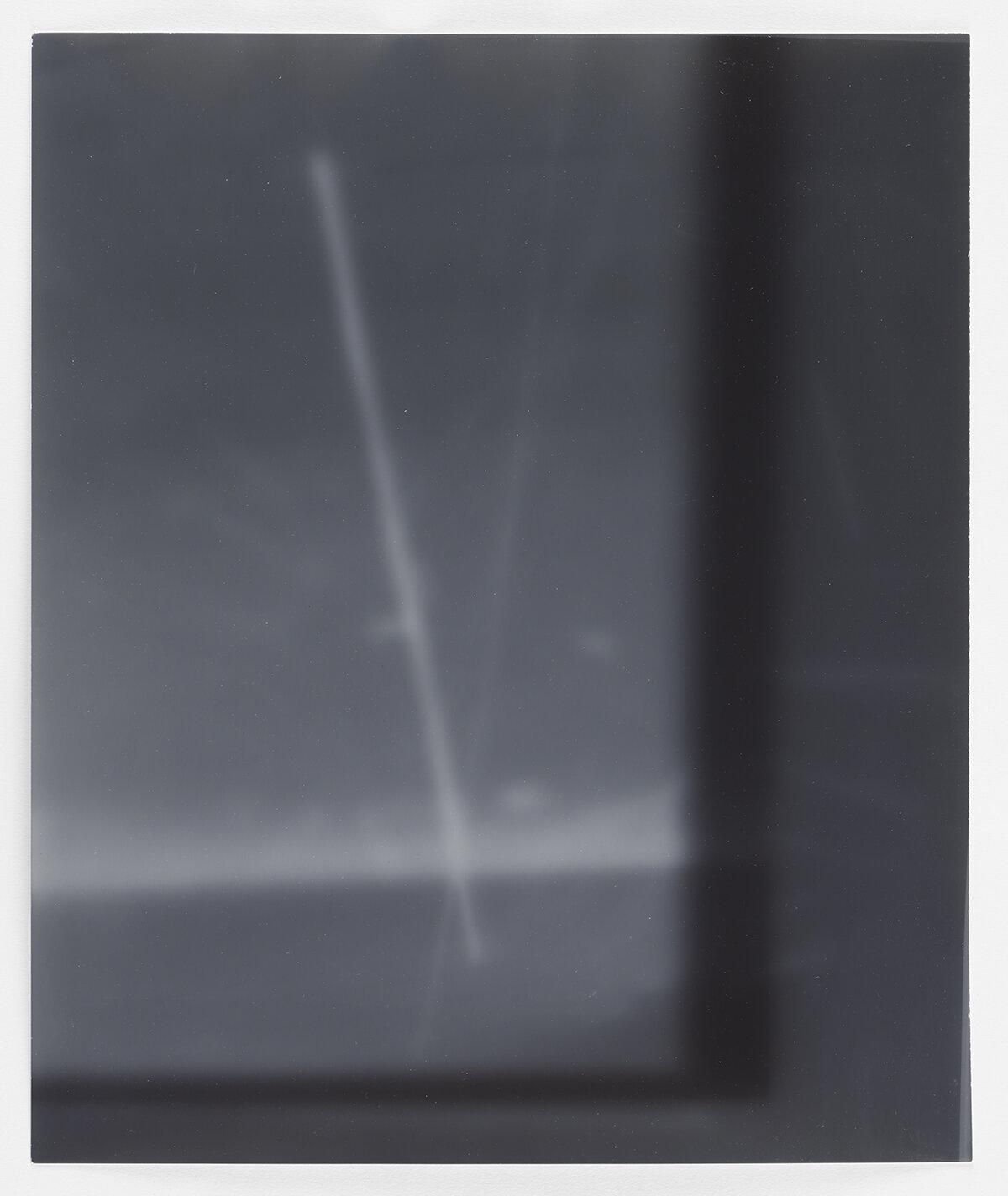
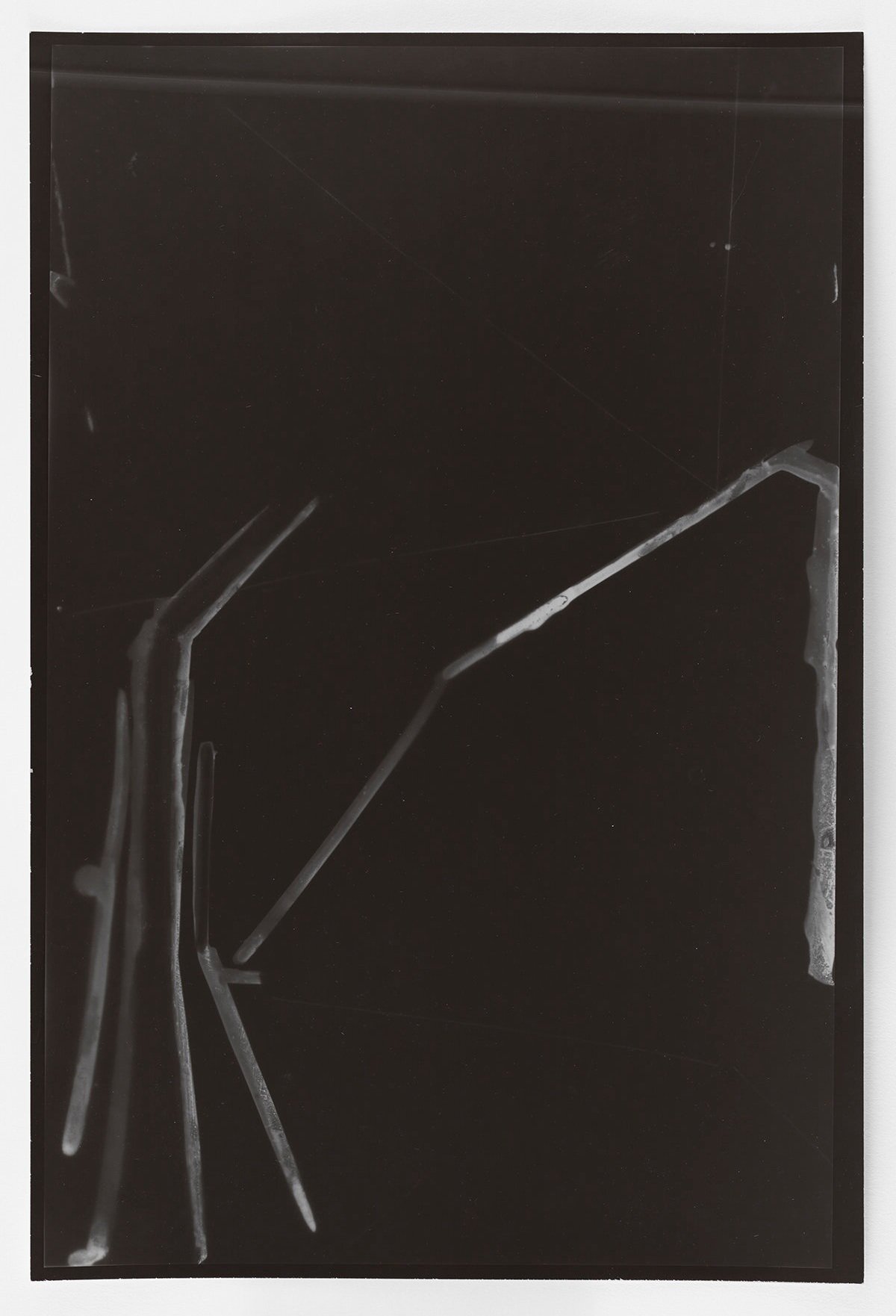
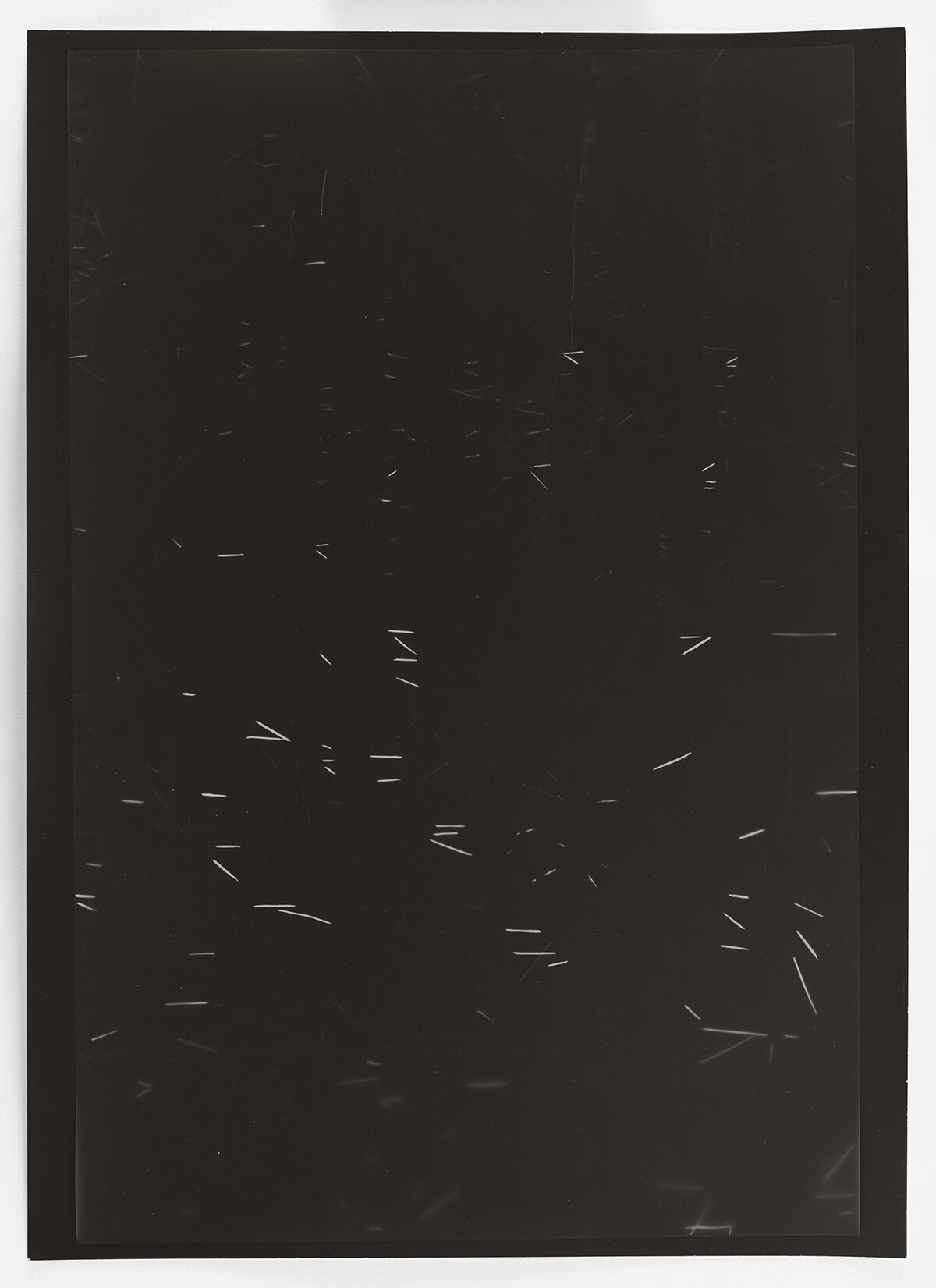

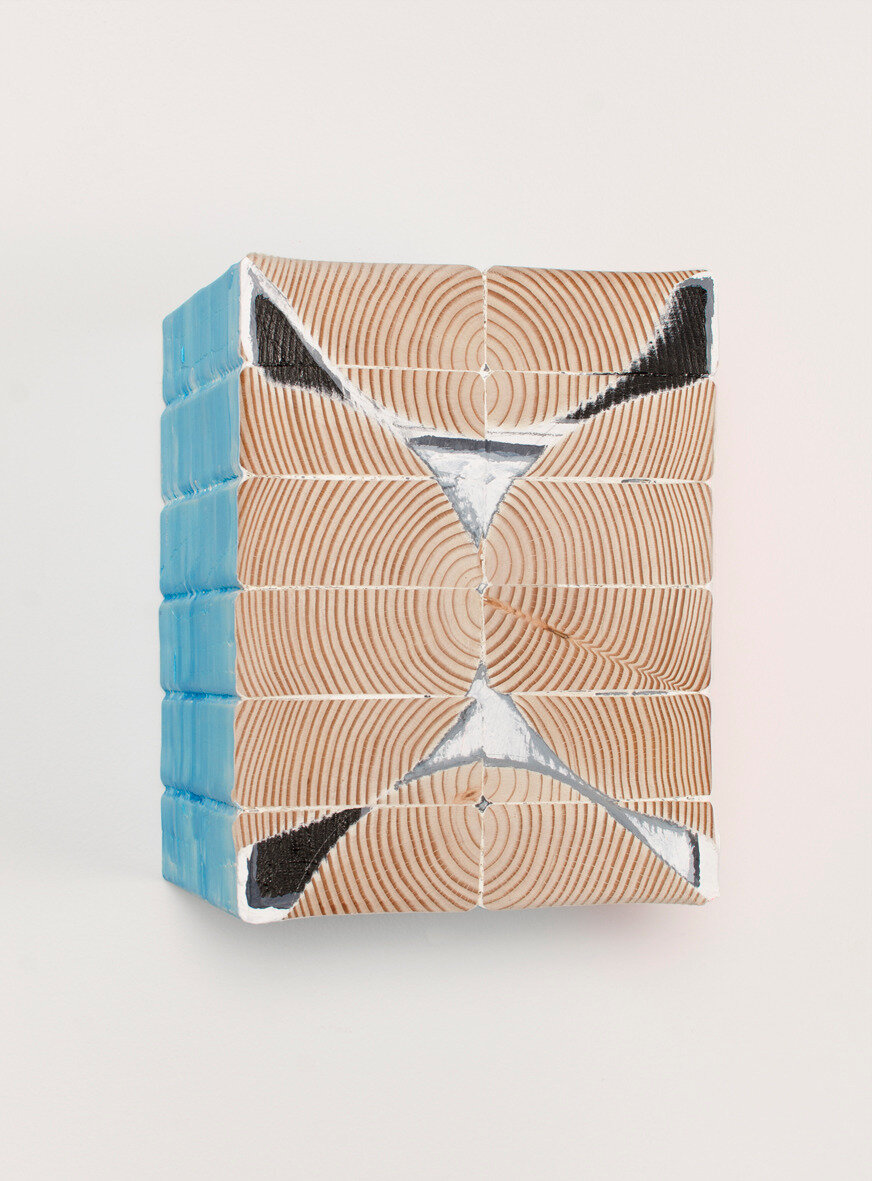


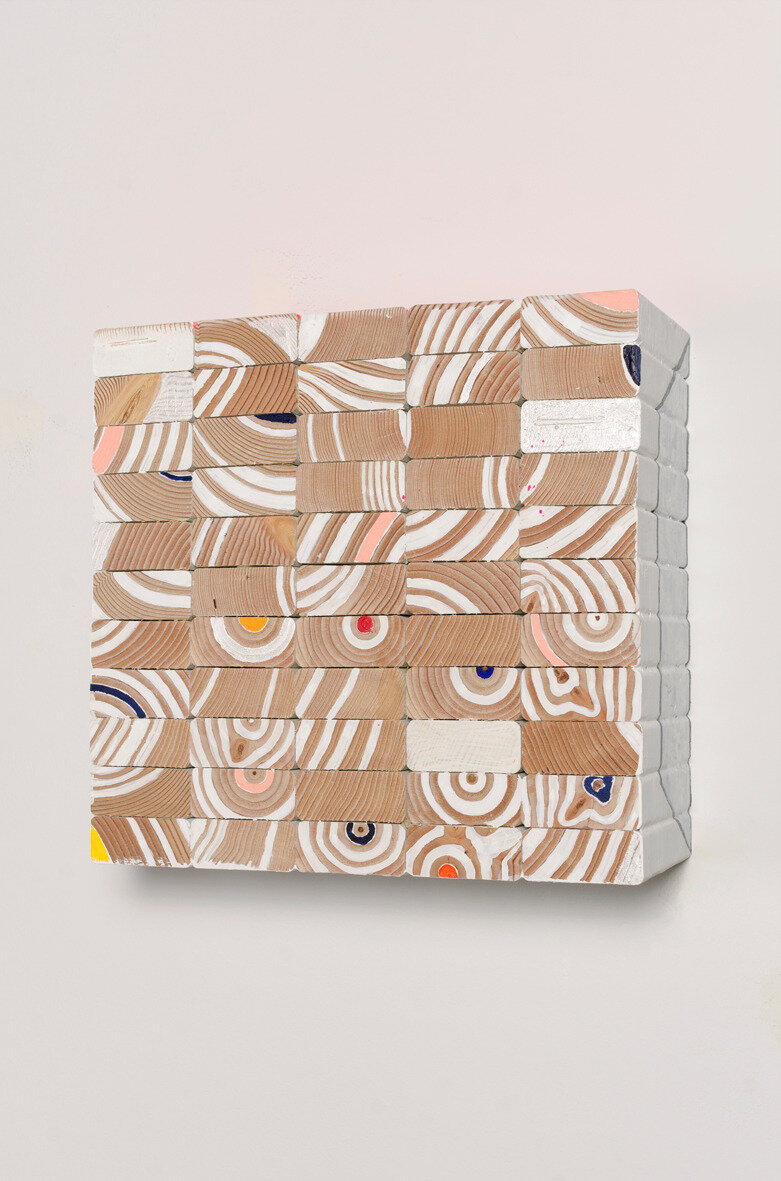
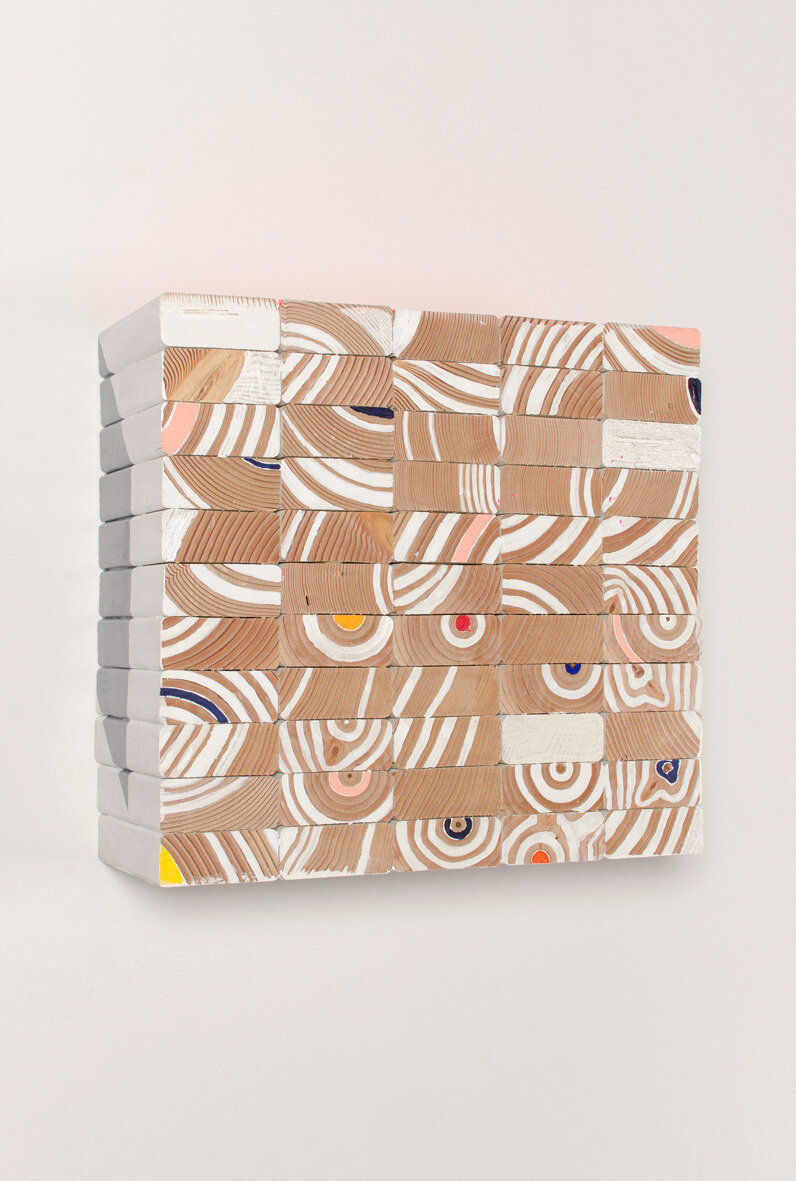
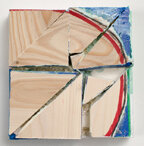


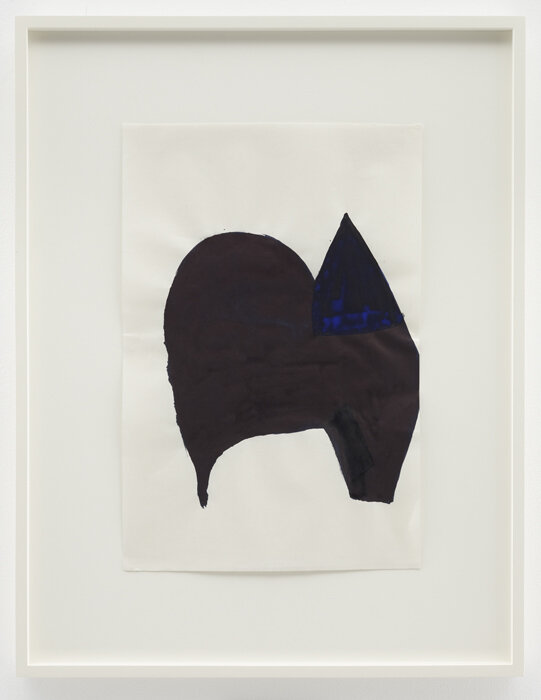
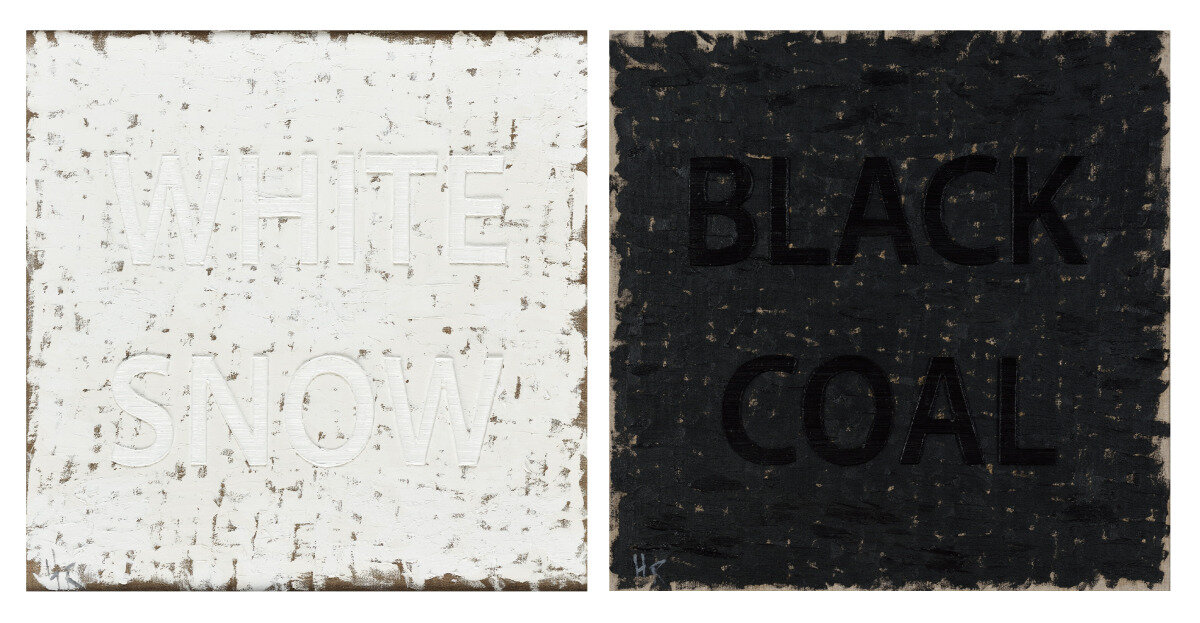
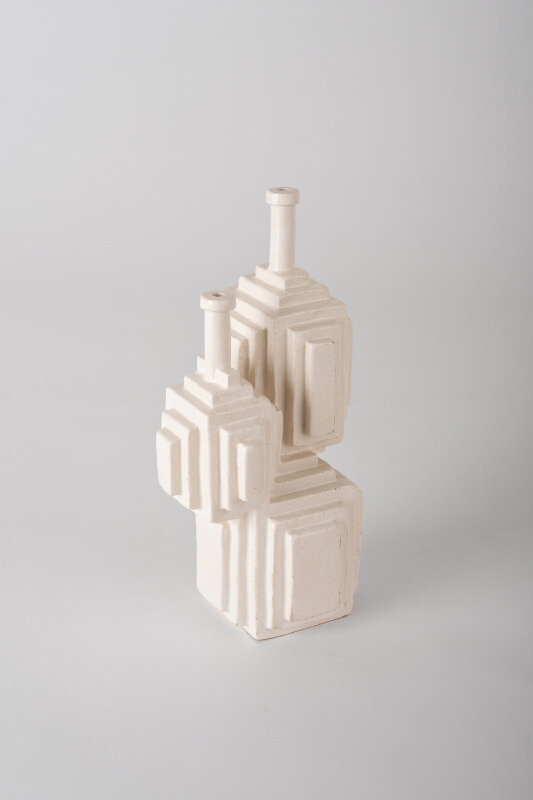


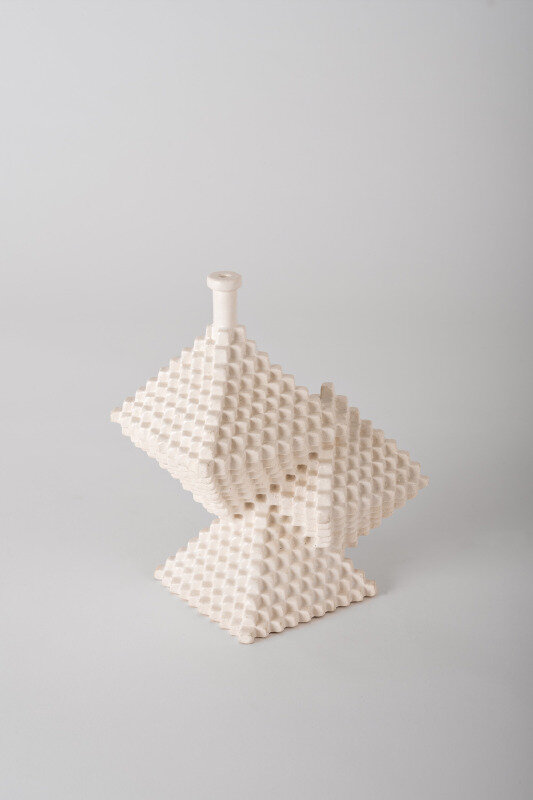
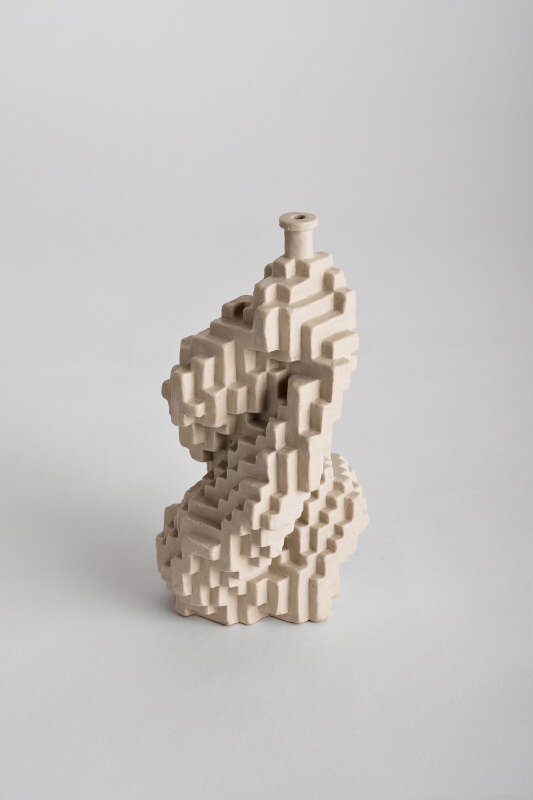
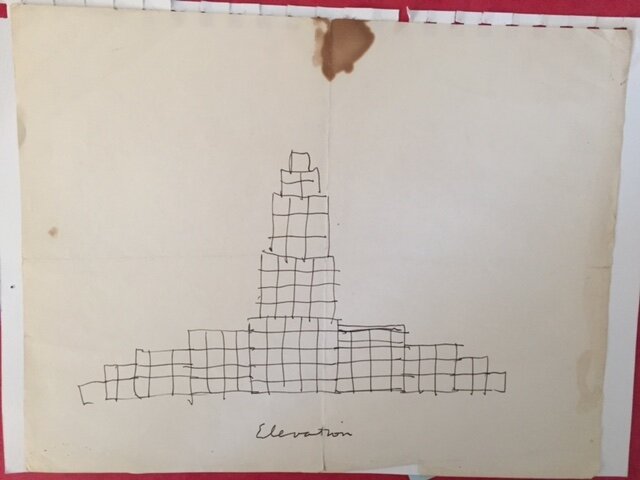
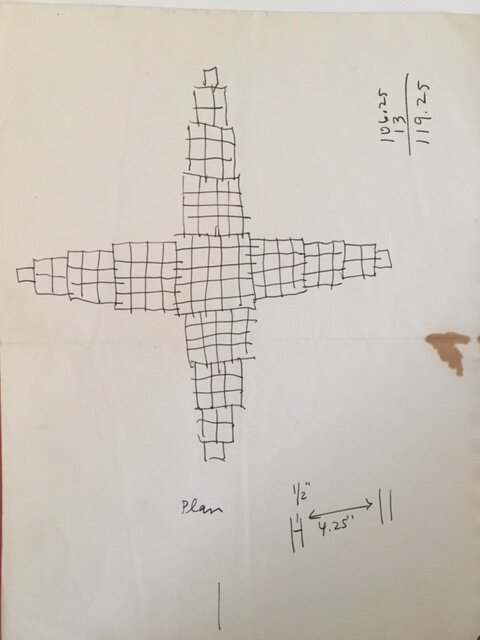

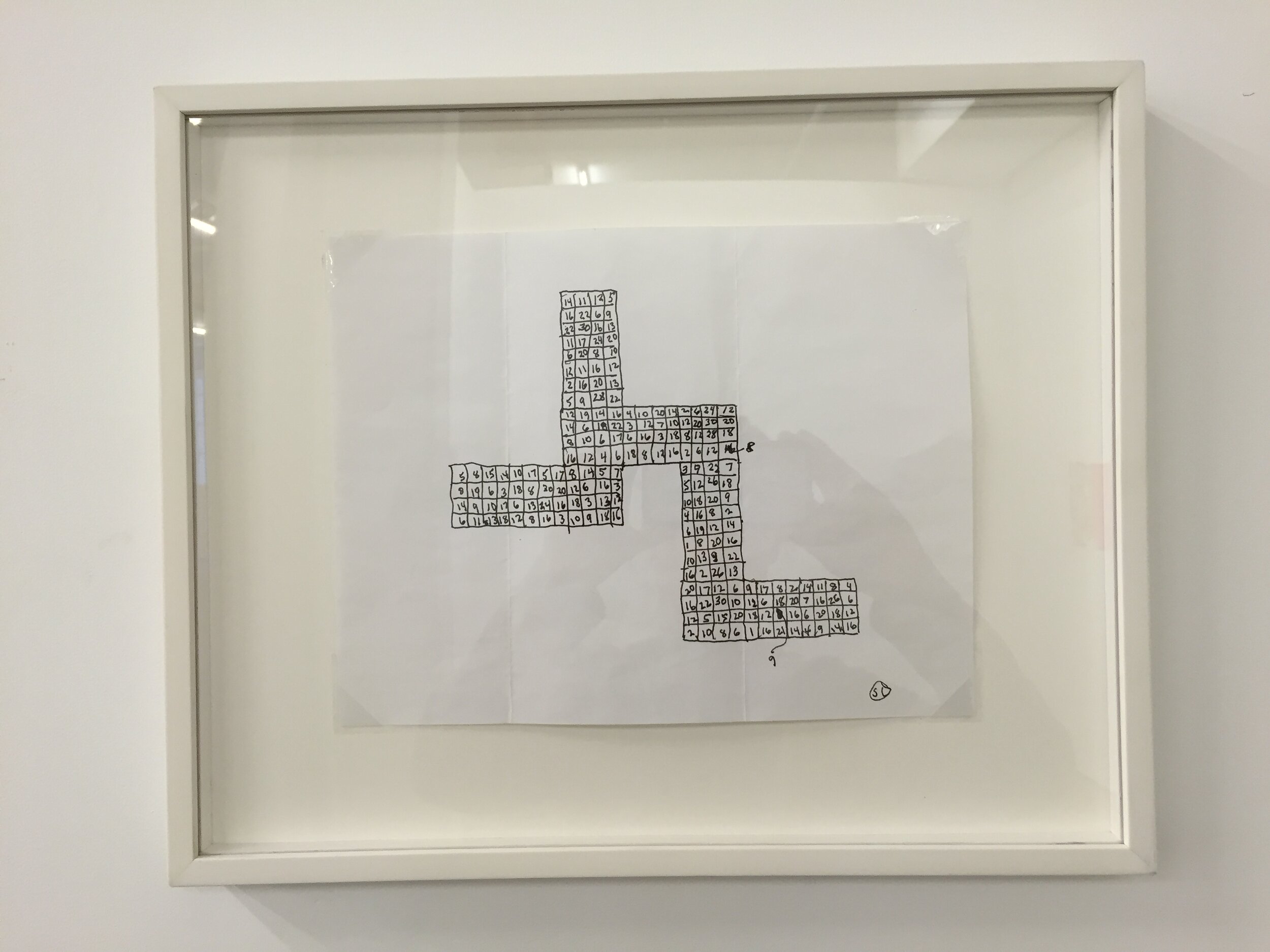
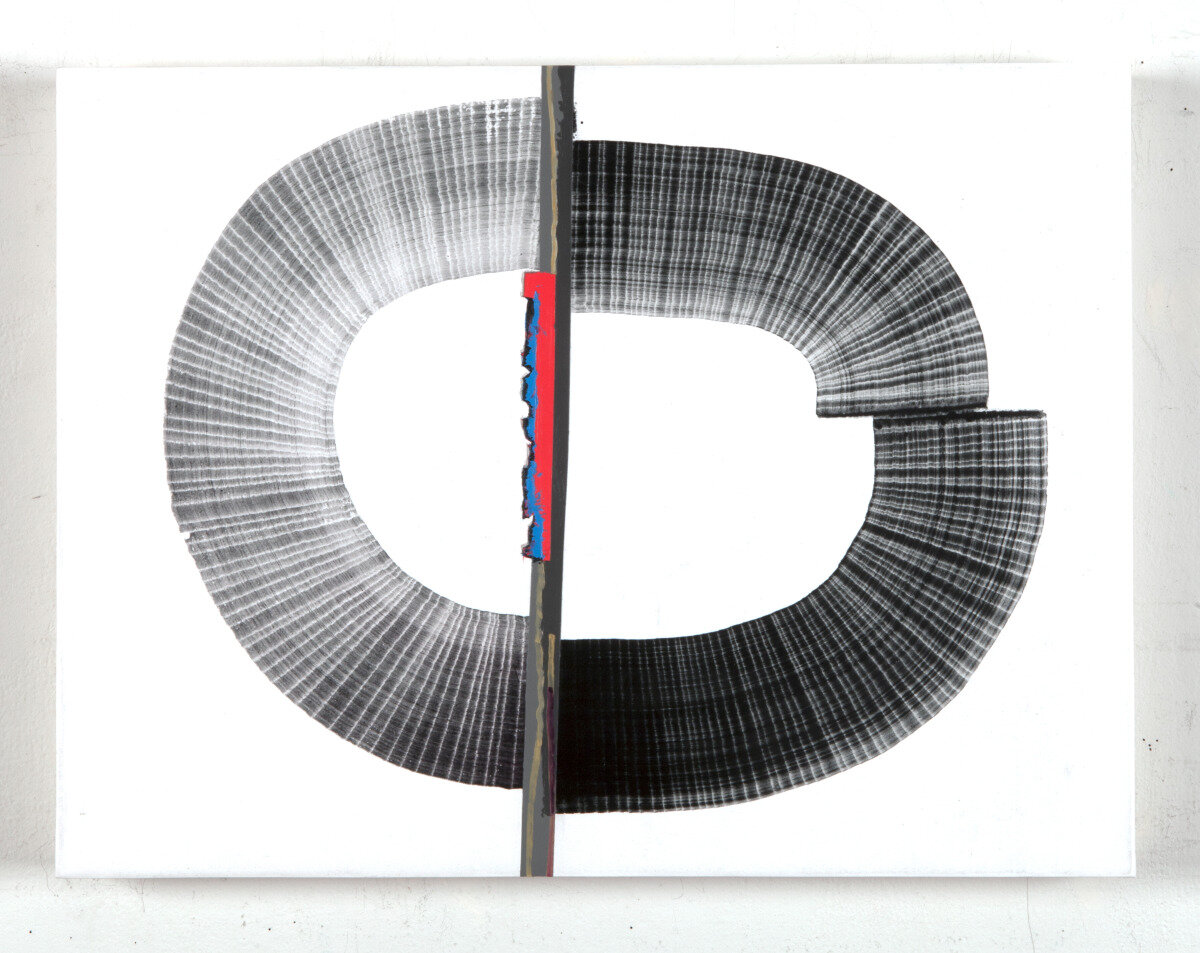
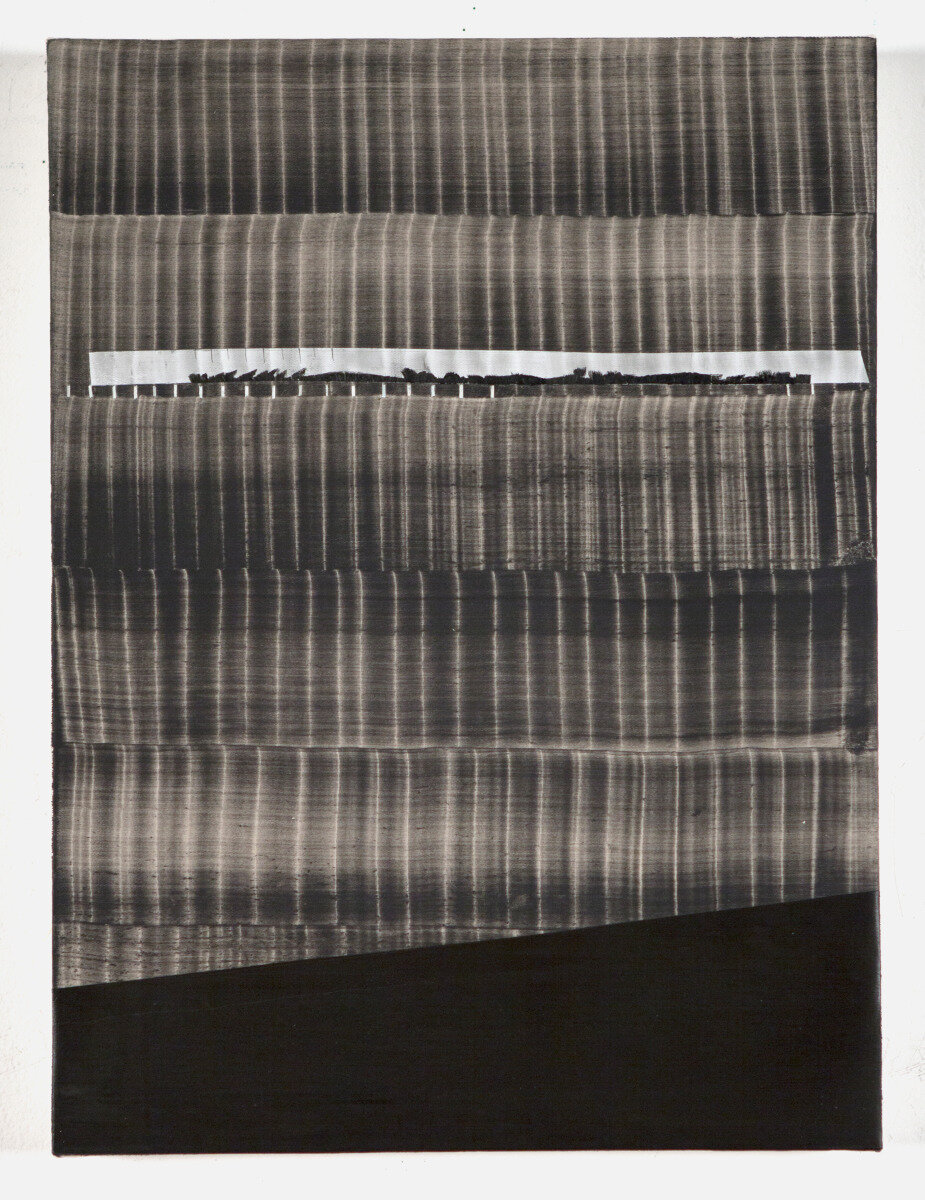
NEW YORK
Split curated by David Rhodes
Eve Aschheim, Cordy Ryman, David Rhodes, Suzan Frecon, Huang Rui, Will Yackulic, Sol LeWitt, Juan Usle
January 19 – February 23, 2017
Opening reception: Thursday, January 19, 6:00 to 8:00 pm
From the Curator David Rhodes:
“He was split, one part of him never left this mental chamber that pictured itself as a sphere full of light fading into dark, because there was no way out. But motion in this world depended on rest in the world outside. A man is in bed, wanting to sleep. A rat is behind the wall at his head, wanting to move. The man hears the rat fidget and cannot sleep, the rat hears the man fidget and dare not more. They are both unhappy, the one fidgeting the other waiting, or both are happy, the rat moving and the man sleeping.”
Samuel Beckett, “Murphy”
One definition in the Merriam Webster Dictionary is: to separate or divide into parts or groups. And, this covers, as it happens, every work in this exhibition. Works can often cause a split in the viewer too, when they are neither definitive nor vague—they can be seen in different ways—as a lot of the best art is. Splitting can be the process by which work is partially composed, or entirely constructed. A work is rendered through a process, one mark and then another, or composed, divided again and again, into accumulative parts. To bring to mind the word itself is to contemplate its complexity: to cleave, cut, hew, break, leave, go, divide (into 2 or more parts), separate. But it can also be necessary, as in splitting cells, or not, as in splitting atoms. The word has been around a long time, not as long as the splitting of cells, granted, its first known use was 1597. We can also split the difference, or be on a split-level. Talk can be of a split personality. Images are split across a Giotto Quattrocento panel painting, a 1960s Jean-Luc Godard film, or, any recent Javier Marías novel. Separation, productive or painful, is inescapable in life. In art, it is also inescapable, if not always understood as such, certainly its there, constructive in it’s desire to—go on.
Eve Aschheim’s drawings and photograms evince a fragmented balance. The dynamic is spatial and subtly disjunctive. By accumulating, Sol Lewitt structures drawing both arithmetically and poetically toward visual results. The concept drives what we see—each part begets the next. Different levels, above and below, together with the asymmetrical meeting of shape recur throughout Suzan Frecon’s oeuvre. The two sides of Huang Rui’s black and white series mirror opposites. Comprising multiple parts, one next to the other, Cordy Ryman’s assemblage manifest divisions as central to composition. In Juan Uslé’s painting there are often incremental, but continuous lines, the progeny of a moving brush. With the apparent repetition of one cube after another in each piece, Will Yackulic’s sculptures differ greatly, each a separate personality. In my own paintings, divisions occur as a constructive principle, one area not continuous with another. What “split” means in the works brought together for this exhibition is as various as the works themselves—from underlying process to overt subject matter, no doubt, viewers will also, and as it should be, split in their perceptions.
David Rhodes

